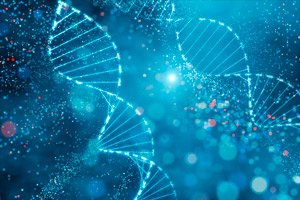
All iLive content is medically reviewed or fact checked to ensure as much factual accuracy as possible.
We have strict sourcing guidelines and only link to reputable media sites, academic research institutions and, whenever possible, medically peer reviewed studies. Note that the numbers in parentheses ([1], [2], etc.) are clickable links to these studies.
If you feel that any of our content is inaccurate, out-of-date, or otherwise questionable, please select it and press Ctrl + Enter.
'Exposome vs. Genes': How Environment and Lifestyle Push Cells Towards Cancer - and What to Do About It
Last reviewed: 18.08.2025
 ">
">An editorial published in Oncotarget condenses our current understanding of how the exposome—the sum of all environmental exposures over a lifetime—interacts with genes to influence the initiation and progression of cancer. The authors examine the contributions of air, water, diet, infection, and stress, showing how these factors cause mutations, disrupt DNA repair, and rewrite gene expression.
Background
- The proportion of preventable cancer cases is large. WHO estimates that 30–50% of cancer cases can be prevented by reducing exposures and changing behavior (tobacco, alcohol, diet, obesity, UV, infections, etc.). This is the practical reason for considering the exposome, not just genetics.
- Environmental carcinogens are confirmed at the consensus level. Classic examples: outdoor air smog and PM2.5 (IARC: Group 1 carcinogen), processed meat (Group 1), red meat (probable carcinogen). These factors act through inflammation, DNA damage and epigenetic shifts – mechanisms that the editors of Oncotarget also recall.
- Why a “moving target”: mixtures, doses, and windows of vulnerability. Exposures come in combinations, varying in time and intensity; early life is critical. This is the main difficulty in measuring the exposome, and the reason why simple “one factor → one risk” underestimates reality.
- How the exposome is being studied today. The focus is on population biomonitoring (e.g., CDC NHANES reports), as well as multi-omics (non-targeted metabolomics, adductomics, epigenomics), wearable sensors, and geomodels. The goal is to link “exposure fingerprints” in blood/urine to pathway changes and clinical outcomes.
- The genes x environment nexus. This is not about opposition: the environment can trigger tumor growth in predisposed tissue, enhance mutagenesis, or suppress DNA repair; conversely, genetics determines sensitivity to the same intervention. It is this two-way model that the Oncotarget article emphasizes.
- Practical implications: In addition to classical prevention (tobacco/alcohol cessation, nutrition, body weight, sun protection, vaccination against oncogenic infections), the field is moving towards the integration of exposomics + genetics for personalized screening and early intervention.
What is an "Exposome" and Why is it Important?
The term was coined by Christopher Wilde: it is the entire “tail” of exposures—from diet and tobacco smoke to microbiota, infections, UV, and chemicals—that, together with genetics, shapes the risk of diseases, including cancer. The idea of the exposome complements the genome: to understand the origins of cancer, we need to measure not only DNA but also life exposures.
Key risk areas
- Air: Almost the entire world population breathes air that does not meet WHO recommendations; fine particles and gases are associated with mutations (eg, in EGFR) and lung cancer risk.
- Nutrition. Processed meat is classified as a human carcinogen by IARC; nitroso compounds and processed products may affect gene expression and mutagenesis.
- Water and Pollutants: PAHs and Arsenic Associated with DNA Damage and Epigenetic Shifts.
- Infections. H. pylori, HPV, EBV, etc. through toxins/effector proteins and chronic inflammation cause genomic instability and tumor transformation.
- Stress: Glucocorticoids and catecholamines alter the function of guardian genes (e.g. p53) and DNA damage response pathways—another pathway to tumors.
How is it studied and what is new in the approaches
The exposome is complex: there are many exposures, and they change over time. That’s why there is a growing role for multi-omics methods, mass spectrometry, and large biomonitoring programs (NHANES) that measure hundreds of markers of chemical exposures in blood and urine and link them to health outcomes. This helps not only to see associations, but also to find biomarkers of risk and prevention targets.
What this means for prevention right now
The authors remind us that up to 30–40% of cancer cases are potentially preventable by modifiable factors – diet, physical activity, limiting alcohol and tobacco, controlling body weight, air and water quality. At the policy level – monitoring and reducing pollutants; at the individual level – conscious choice of environment and habits.
Important detail: this is an editorial.
This is not an original clinical study, but a manifesto review of the “exposome ↔ genes ↔ cancer” link, which is based on major reports and consensuses (WHO, IARC, NHANES). Its value is in the clear “field map” and emphases for practice and research: from better measurement of impacts to the integration of exposomes with genetics and cancer screening.
Source: Saqib U. et al. “ EXPOSOMES and GENES: The duo influencing CANCER initiation and progression,” Oncotarget, March 10, 2025.
